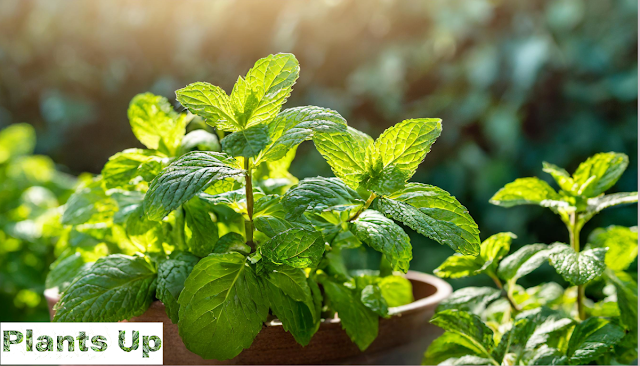 |
| Summer-Flowering Plants to Add Color to Your Garden |
Importance of summer-flowering plants
In this article, we will explore some of the best summer-flowering plants that are easy to grow and care for, and will add color and interest to your garden all summer long. From bold and showy blooms to delicate and fragrant flowers, we have something for every garden style and
preference.Summer is a time for vibrant colors and blooming flowers. So, let's dive in and discover the world of summer-flowering plants!
Top 10 summer-flowering plants to add to your garden
- Sunflowers - Known for their large, showy blooms that follow the sun, sunflowers are a must-have in any summer garden.
- Zinnias - These colorful flowers come in a variety of shades and sizes and can brighten up any garden.
- Black-eyed Susans - With their yellow petals and dark centers, black-eyed Susans are a popular choice for summer gardens.
- Coneflowers - Also known as Echinacea, these hardy flowers come in a range of colors and attract bees and butterflies to your garden.
- Dahlias - These dramatic flowers bloom in a wide variety of colors and sizes, and their intricate petals make them a standout in any garden.
- Marigolds - With their bright yellow and orange hues, marigolds are a classic summer flower that can also repel pests from your garden.
- Petunias - These versatile flowers come in a range of colors and can be planted in containers, hanging baskets, or directly in the ground.
- Cosmos - These delicate flowers have a wildflower look and add a soft, romantic touch to any garden.
- Lantana - Known for their bright clusters of flowers, lantanas are a low-maintenance option that can add pops of color to your garden all summer long.
- Hibiscus - With their large, showy blooms and tropical look, hibiscus plants can make any garden feel like an island oasis.
No matter your style or preference, adding these summer-flowering plants to your garden is sure to bring color, beauty, and a touch of nature to your outdoor space.
How to Care for Your Summer-Flowering Plants
 |
| How to Care for Your Summer-Flowering Plants |
In order to keep your summer-flowering plants healthy and blooming, it's important to take proper care of them. Here are some tips to keep in mind:
A. Watering: Summer: Flowering plants need to be watered regularly, especially during hot and dry weather. Make sure to water deeply to encourage root growth, and avoid getting water on the leaves to prevent fungal diseases.
B. Fertilizing: Fertilize your plants regularly with a balanced fertilizer to provide them with the nutrients they need to thrive. Follow the instructions on the fertilizer packaging and avoid over-fertilizing, which can damage the plants.
C. Pruning: Deadheading (removing spent flowers) will encourage your plants to produce more blooms. Additionally, pruning can help to shape and control the growth of your plants.
D. Pest control: Keep an eye out for common pests such as aphids and spider mites, and take steps to control them before they become a problem. You can use natural pest control methods or insecticidal soaps.
E. Soil preparation: Before planting your summer-flowering plants, make sure to prepare the soil by adding compost or other organic matter to improve the soil structure and provide essential nutrients.
By following these simple care tips, you can enjoy a beautiful and healthy display of summer-flowering plants in your garden.
Tips for Designing Your Summer Garden
Summer is the perfect time to enjoy the beauty of your garden, and with the right design, it can become a true oasis. Here are some tips to help you create a stunning summer garden:
A. Color Schemes: Choose a color scheme that complements the surrounding landscape and matches the mood you want to create. Bright colors like red, yellow, and orange are great for a cheerful and vibrant garden, while cooler shades like blue, purple, and green can create a calming and relaxing atmosphere.
B. Plant Placement: Consider the height, growth rate, and overall size of your plants when deciding where to place them. Taller plants can provide a nice backdrop, while shorter plants can be used to create borders or add texture.
C. Using Containers: Containers are a great way to add interest and variety to your garden. They can be used to create focal points, highlight specific plants, or add pops of color in different areas.
D. Incorporating Other Elements: You can enhance your garden design by incorporating other elements such as water features, garden art, and seating areas. These elements can add a touch of personality and create a more inviting space for you to enjoy.
By using these tips, you can create a beautiful and inviting summer garden that you can enjoy all season long.
In conclusion, summer-flowering plants are an excellent addition to any garden or outdoor space. They provide a burst of color and beauty during the warmest months of the year and attract pollinators to your garden. By following the care tips we've outlined, you can ensure your summer-flowering plants thrive and bloom to their fullest potential. Don't be afraid to experiment with different color schemes and plant placement to create a stunning summer garden.
So why not start planning and preparing your summer garden today? Happy gardening!
Keywords: summer-flowering plants, sunflowers, zinnias, black-eyed Susans, coneflowers, dahlias, marigolds, petunias, cosmos, lantana, hibiscus, gardening tips
